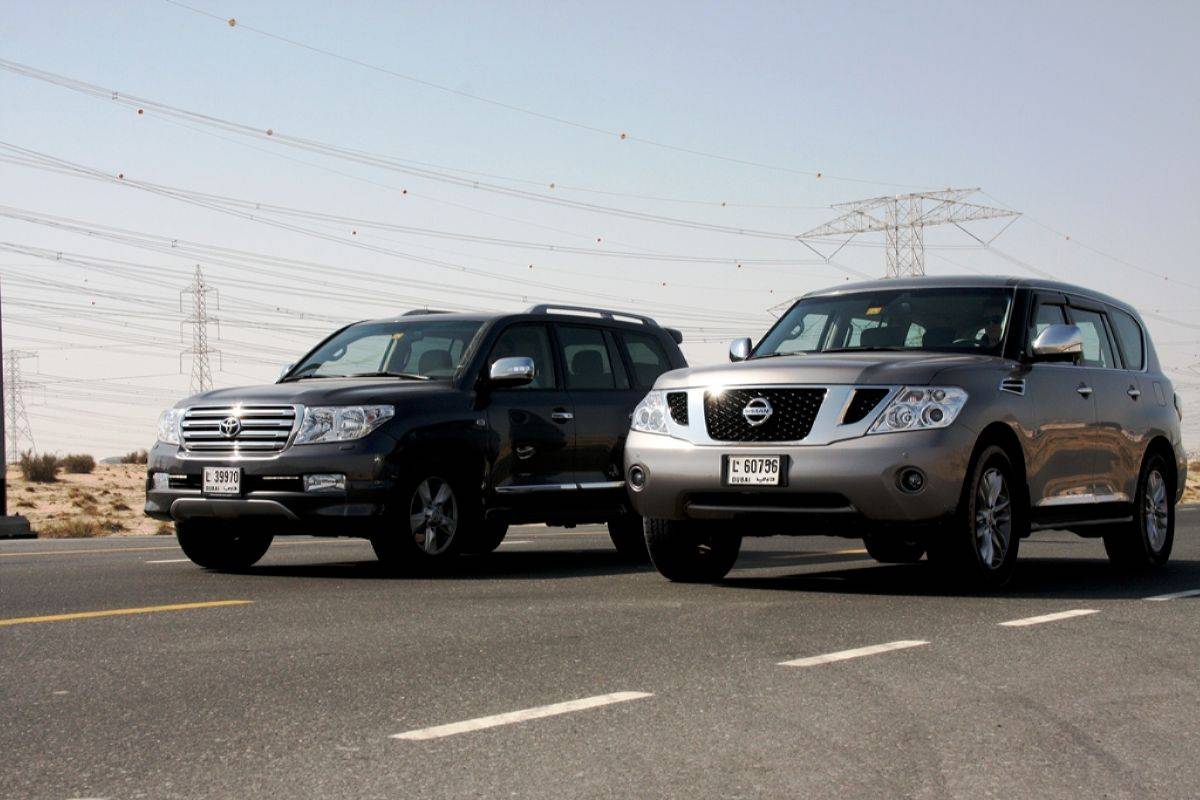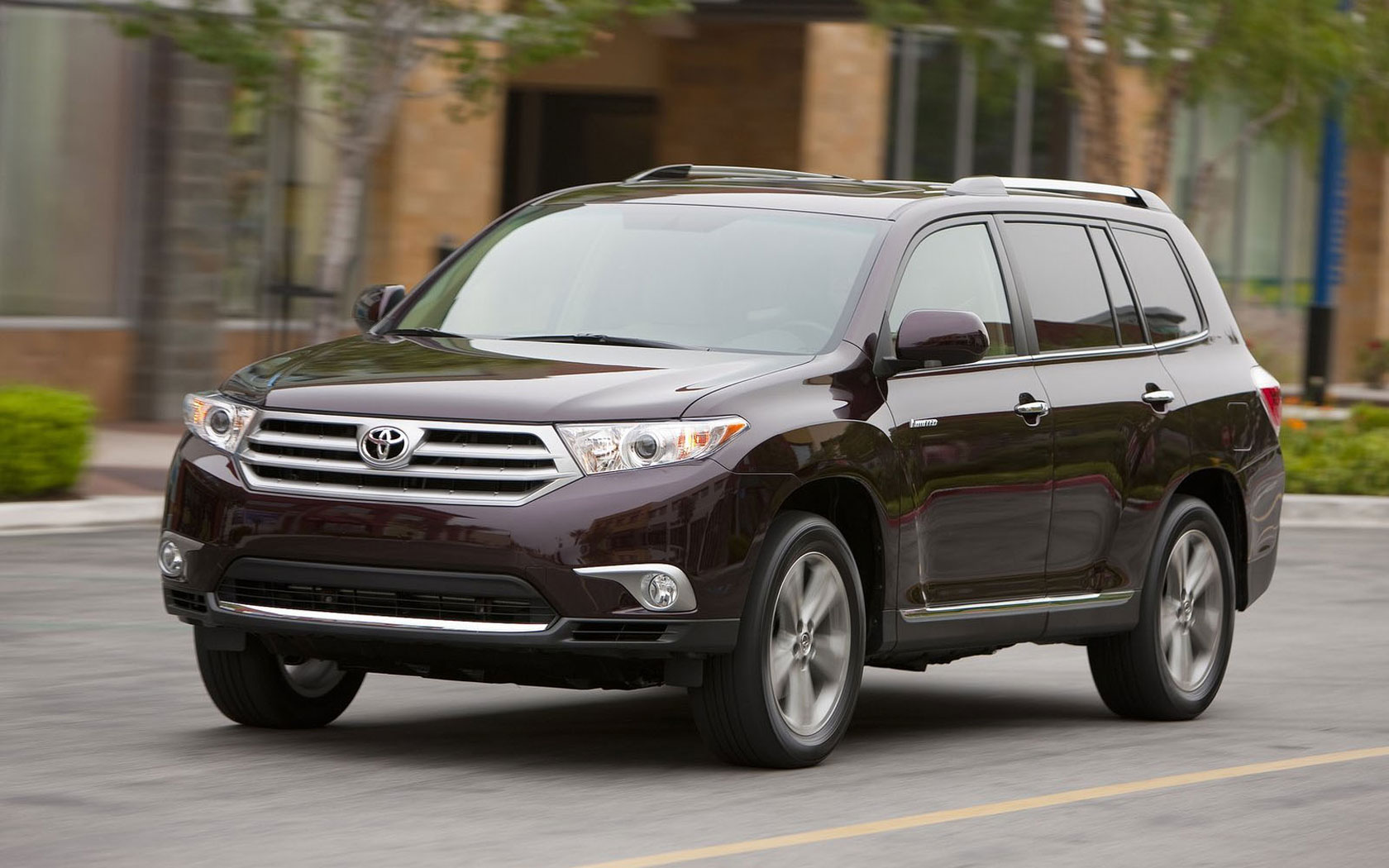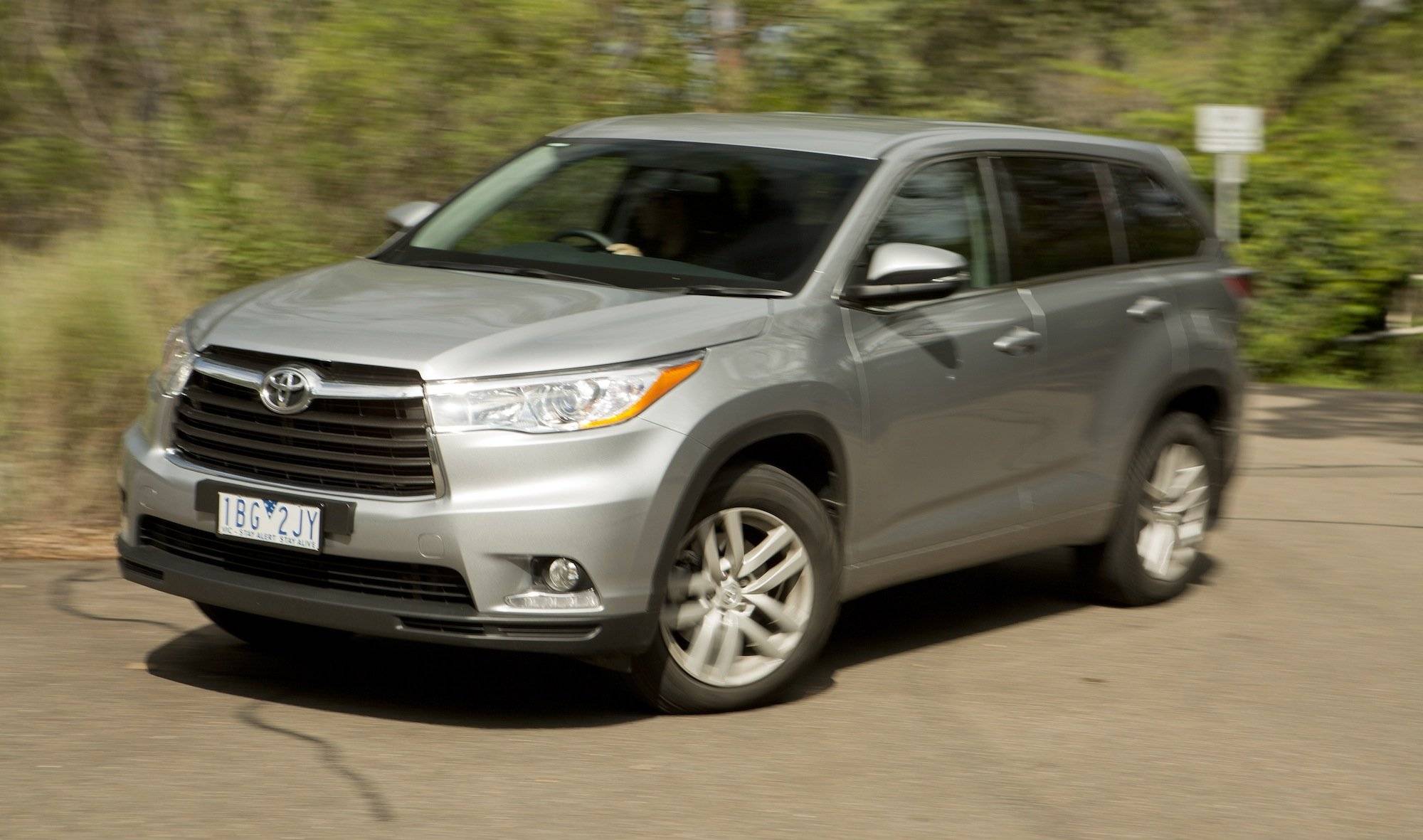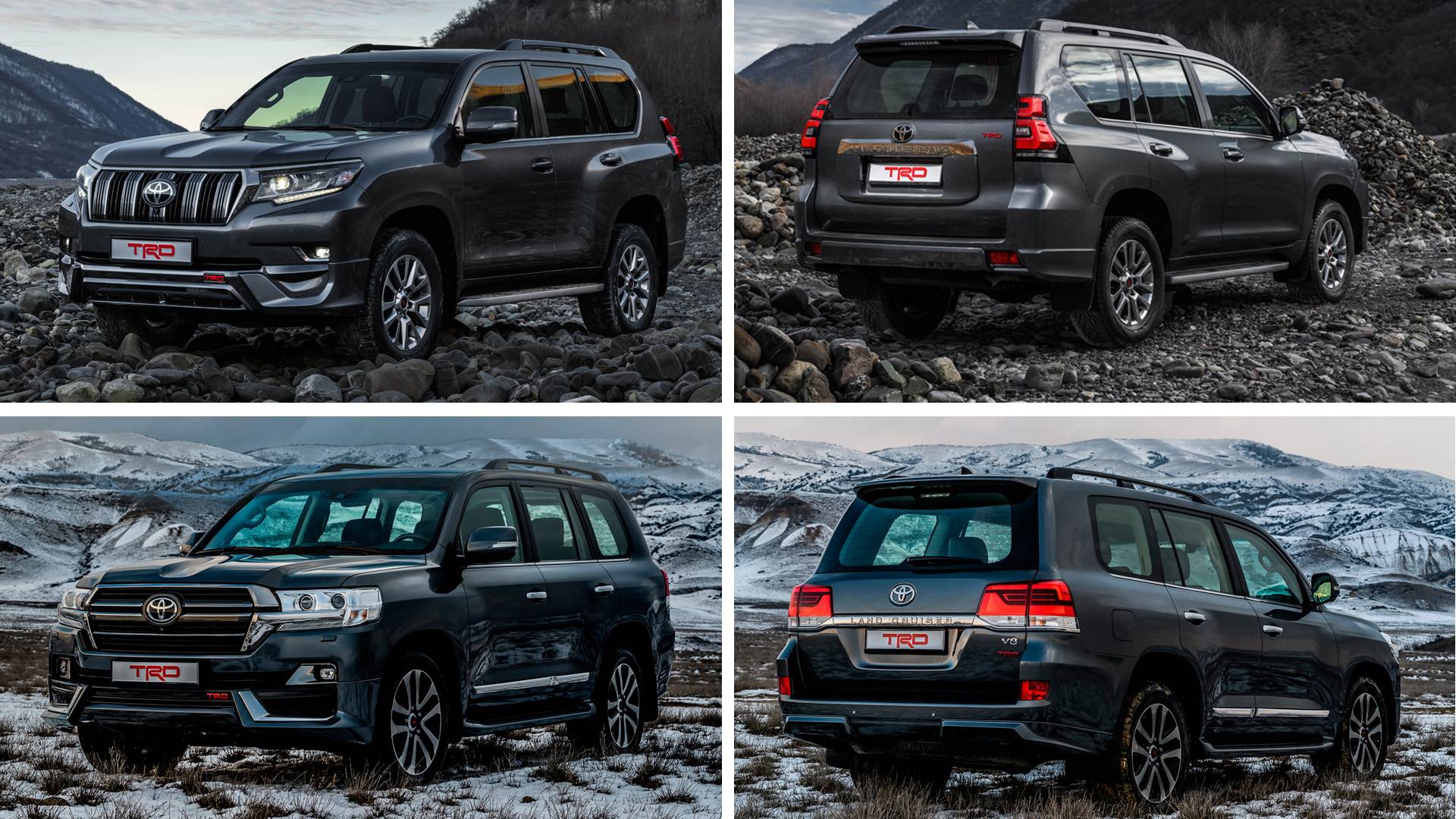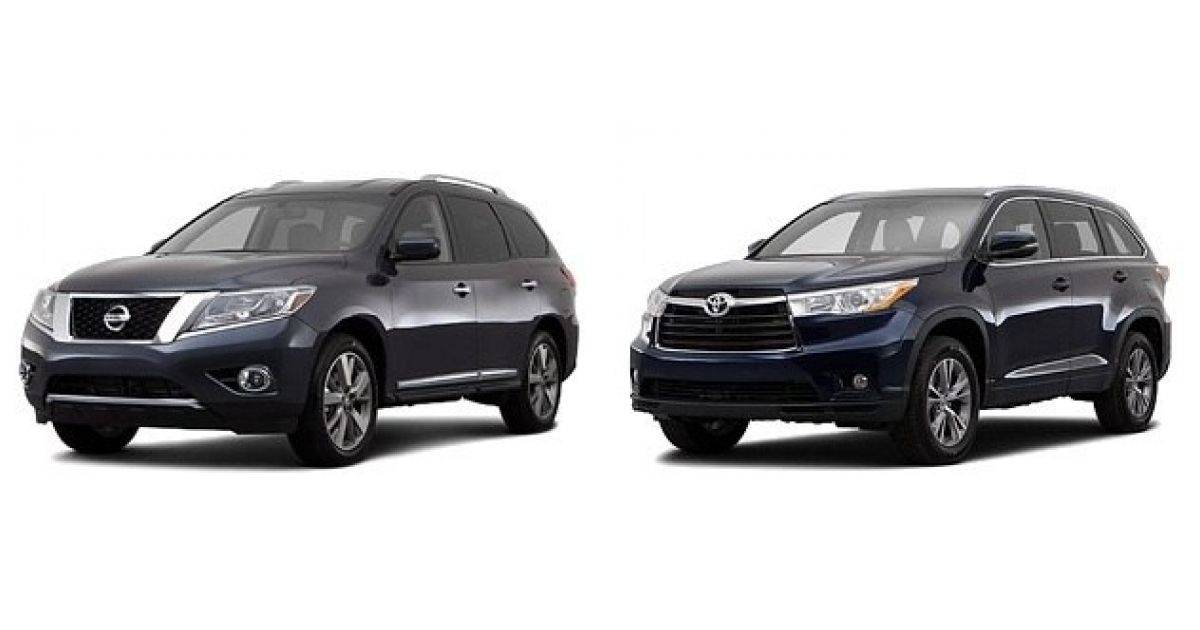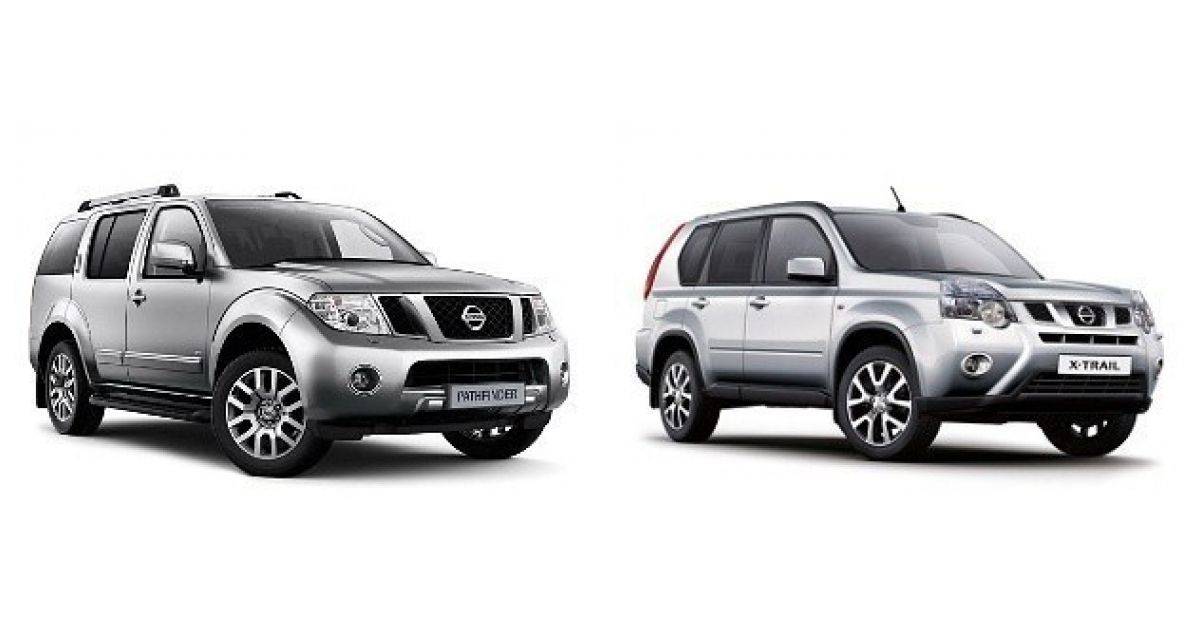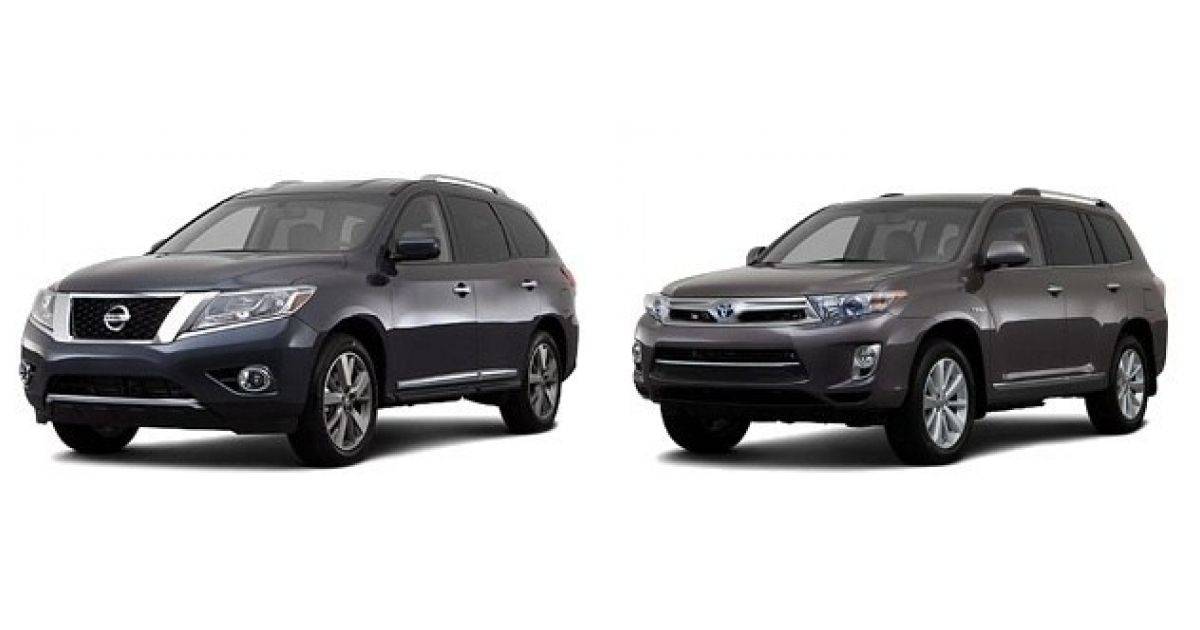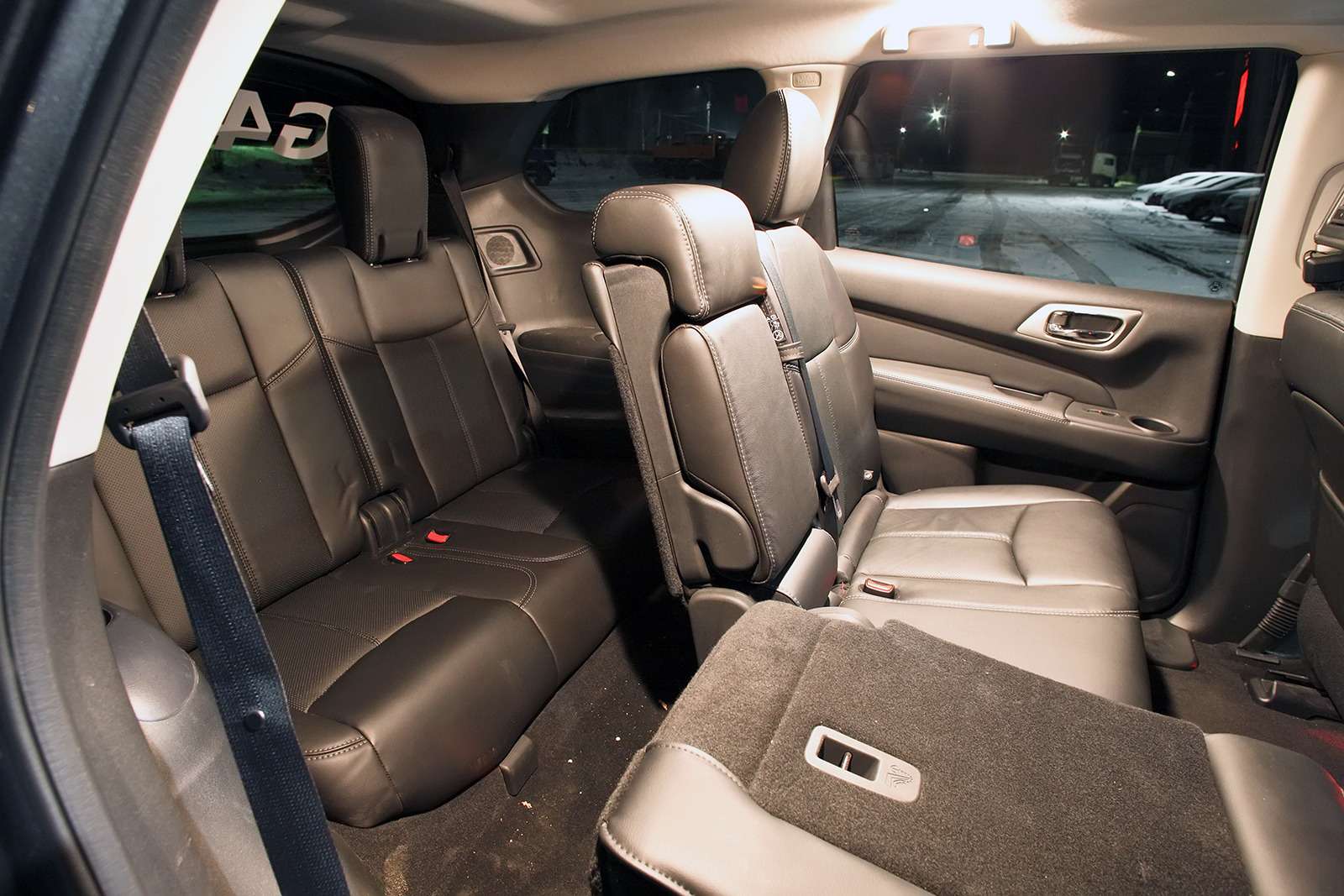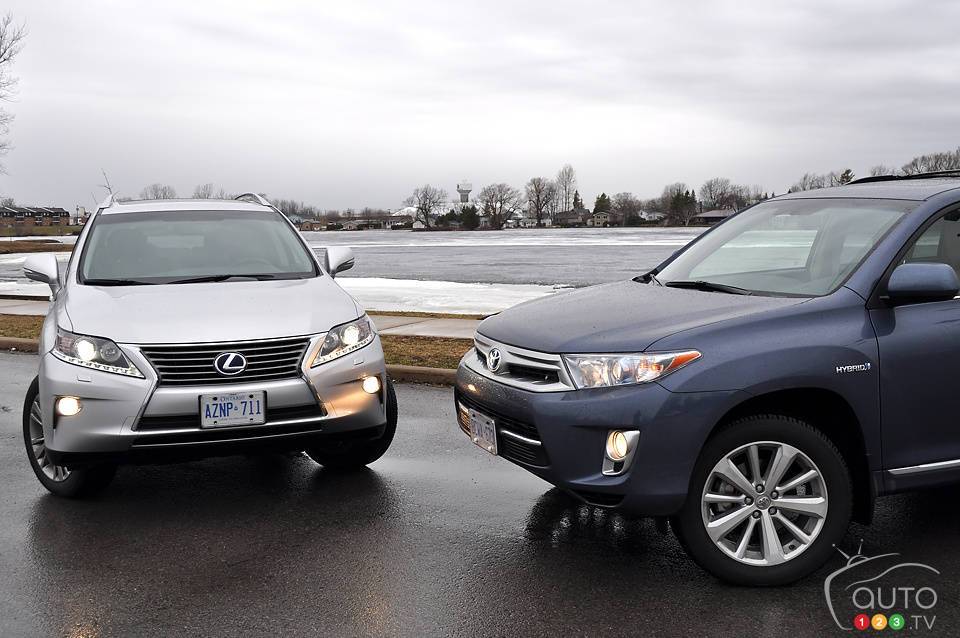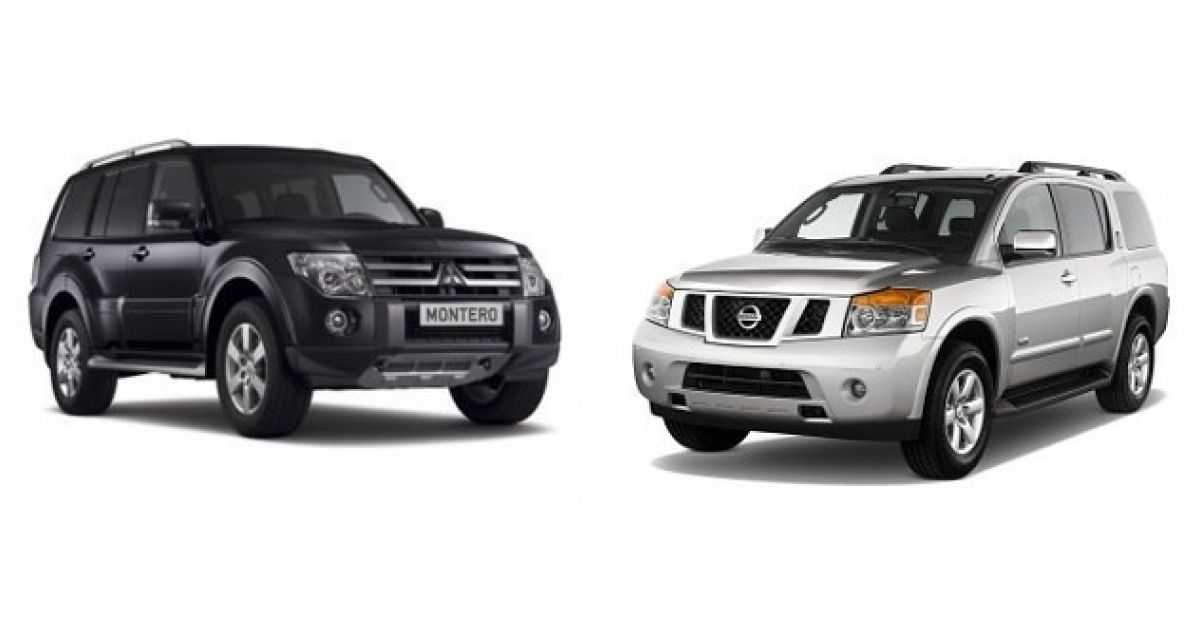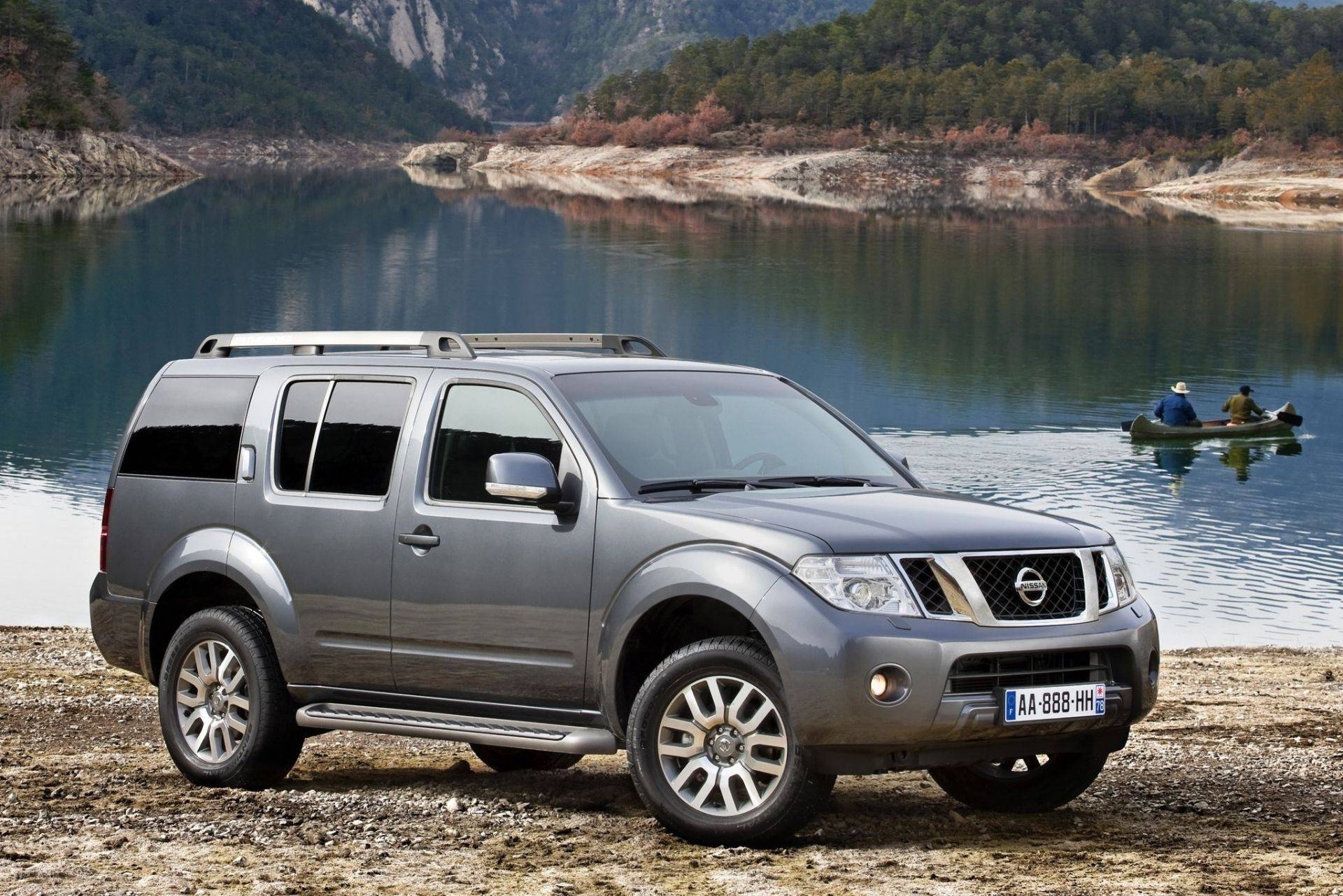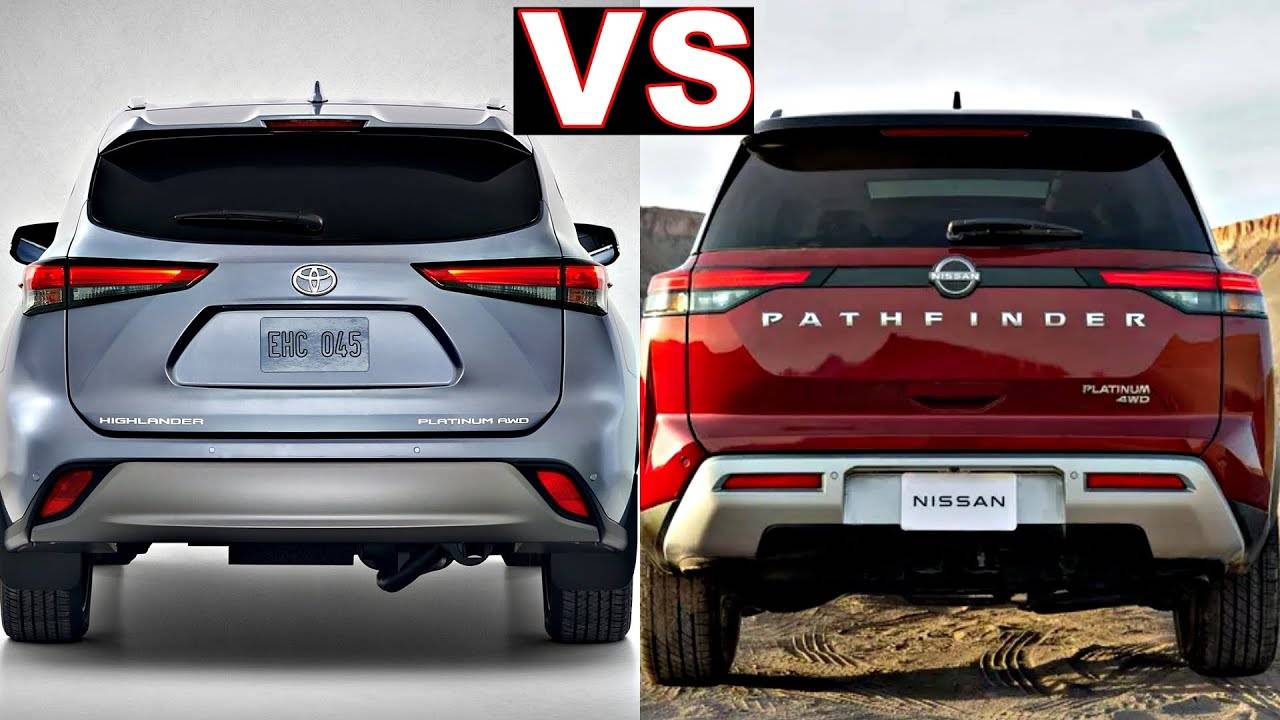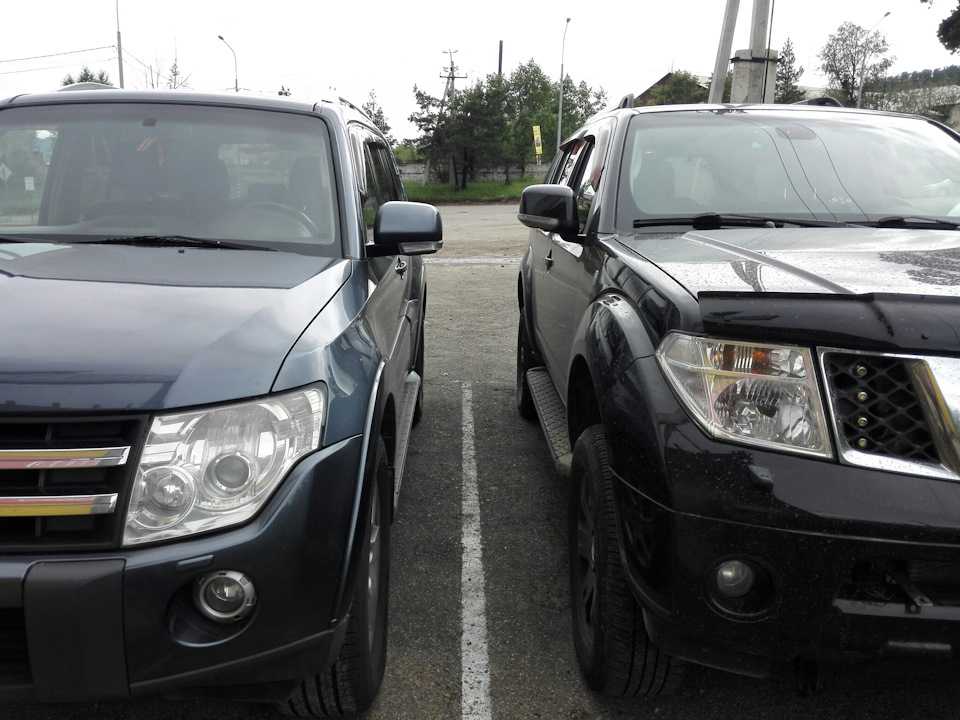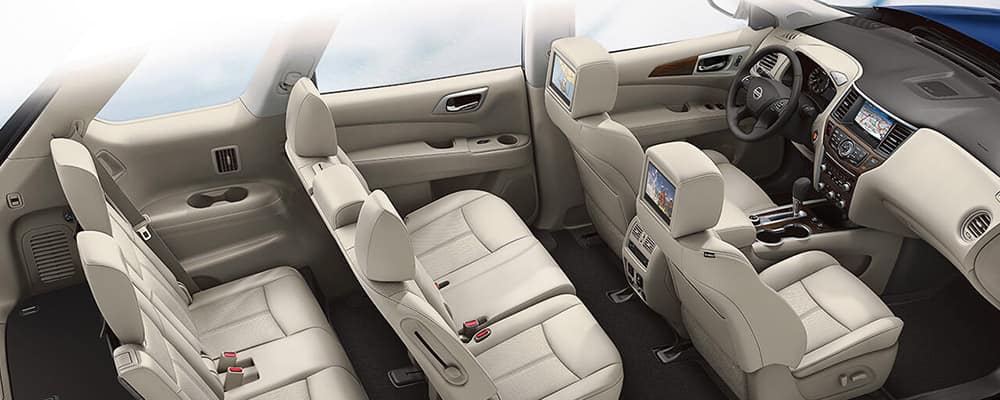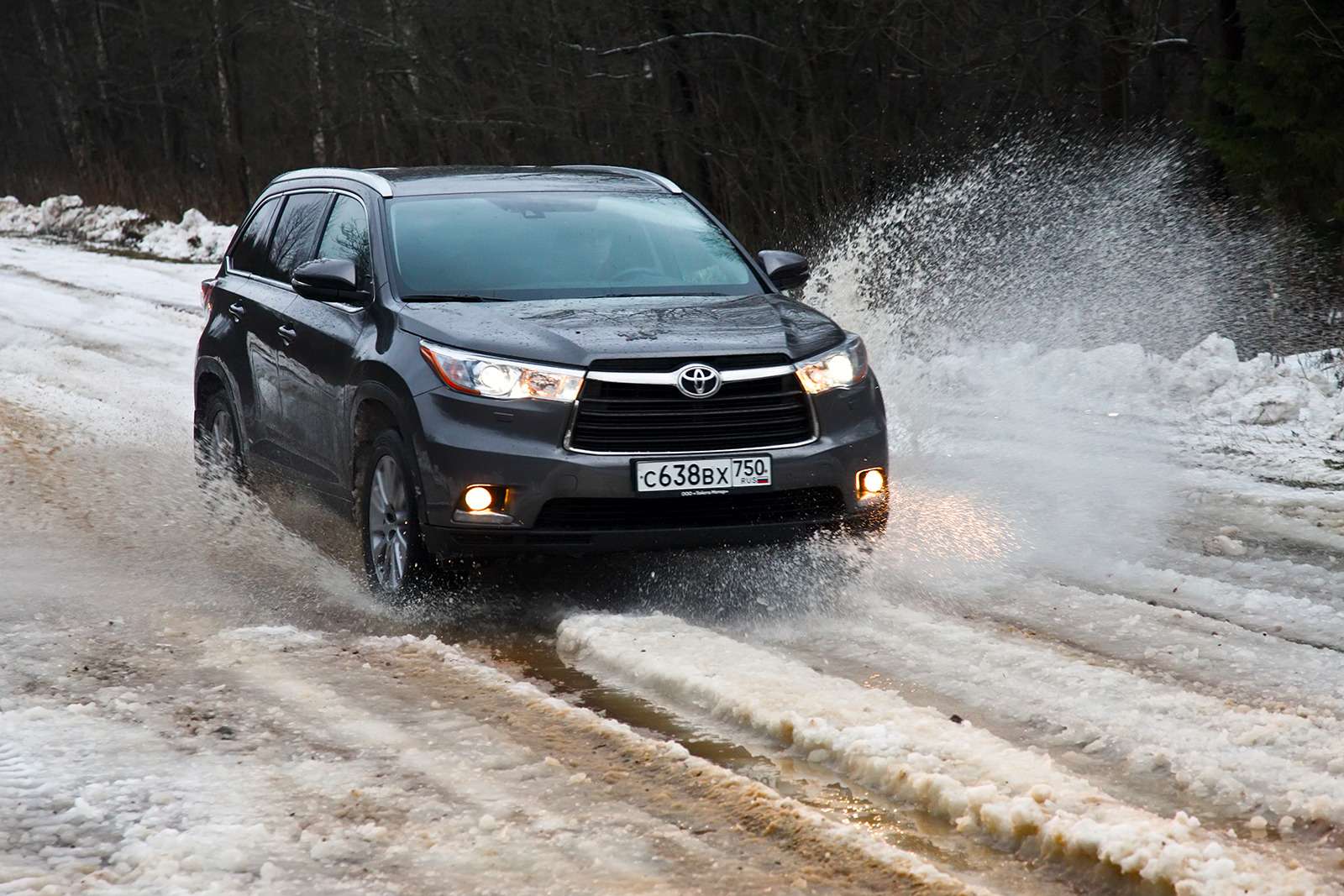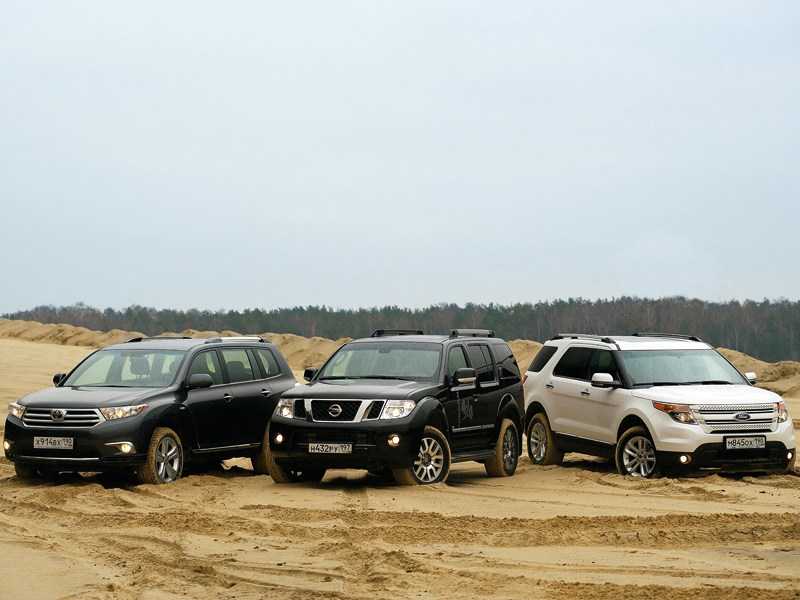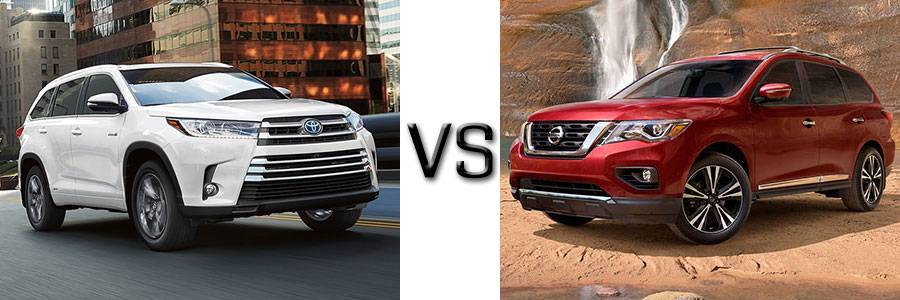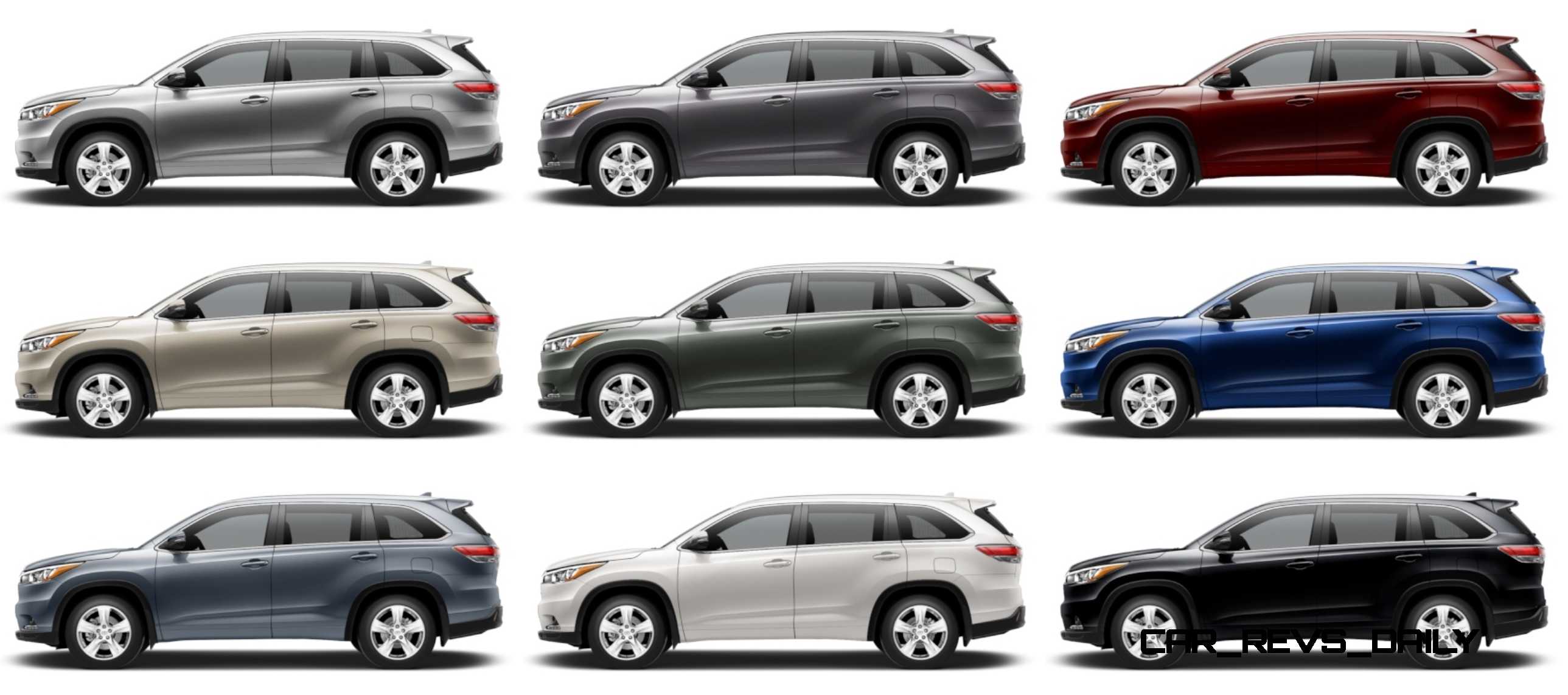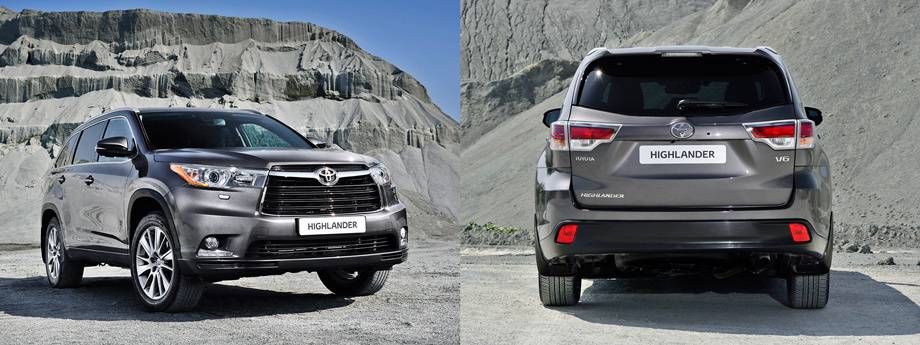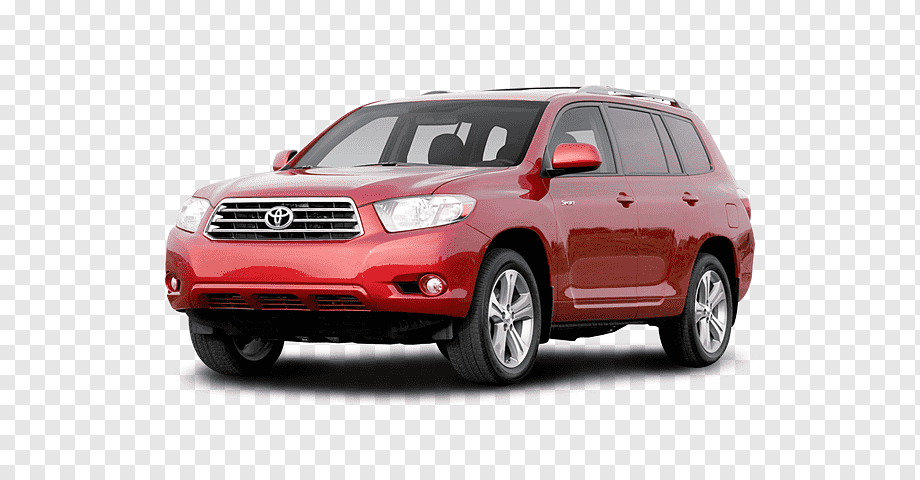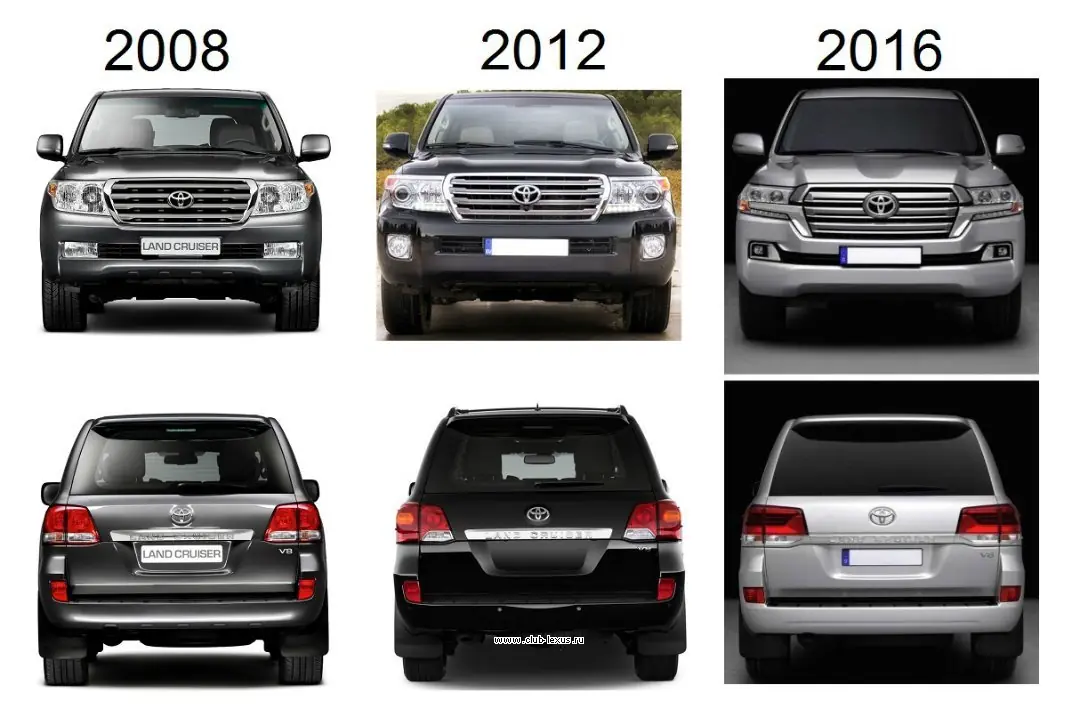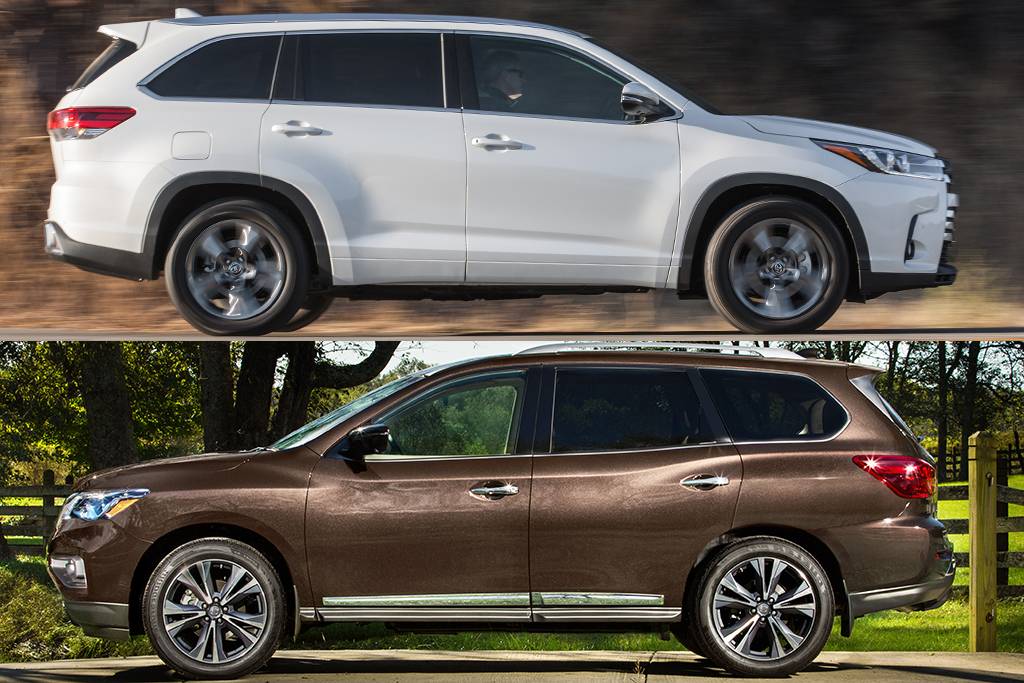User Friendliness
However, in adding all that pizzazz to the cabin of the Pathfinder, Nissan made it less intuitive and user-friendly. The controls are a bit small, but the infotainment system is a highlight, with a responsive interface along with wireless support for Android Auto and Apple CarPlay.
The Highlander feels less tech-oriented, and the user interface is a bit inelegant in comparison. There is Android Auto and Apple CarPlay support, but both are tethered rather than wireless. The lack of displays may seem like a loss, but we’re all so accustomed to analogue displays, so the dials leave the Highlander with a flatter learning curve.
Nissan Pathfinder: 7.5/10; Toyota Highlander: 7/10
What is Toyota Highlander?
The three crossover SUVs, Toyota Highlander, boast about their specifications. However, it has a decent rating on many ranking lists. Additionally, it mostly boasts about its spacious feature.
As for the specifications, It has a 3.5l V6 engine and also available a 2.5l 4-cylinder hybrid. As for the specification, it has 295 horsepower with a torque of 4700rpm.
It has 6600 rpm engine power. Moreover, it has a front-wheel drive with 8-speed automatic transmission and 24mpg fuel economy.
The warranty covers 36,000 miles basic with a 60000 miles drivetrain. It also provides roadside assistance for 2 years without any limited distance coverage.
The features include Bluetooth, navigation, satellite radio, keyless ignition, cruise control and adaptive cruise control, parking assistance, cloth-based upholstery, heated/cooled ventilated seats, folding rear seats, and a sunroof.
Toyota Highlander’s cost is 33,150 USD. It’s an outstanding model that offers good fuel economy, high resale value, and high safety features. However, the car’s third row is specially made for the kids. Therefore, it is restricted to children.
Furthermore, its tow rating is just 3,500 pounds. It is especially recommended for families as it offers seats for 7-8 passengers. Additionally, the car is highly economical and reliable.
Comparing Safety Features: Toyota Highlander vs. Nissan Pathfinder
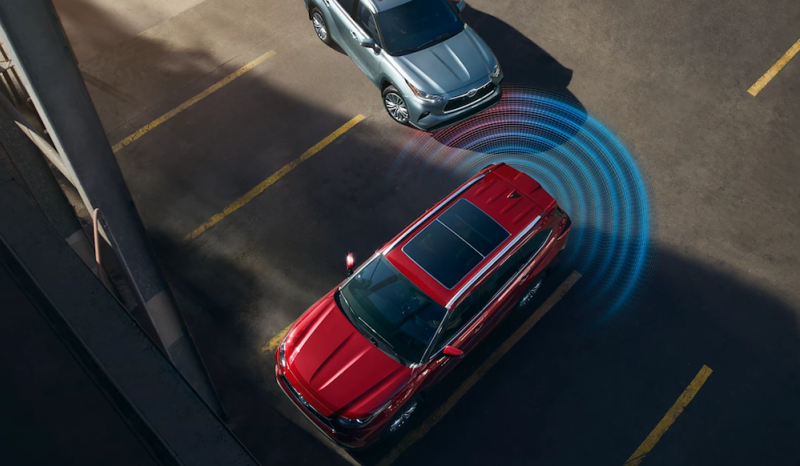 Source: toyotaofmorristown
Source: toyotaofmorristown
The Toyota Safety Sense 2.5+ system is a standard feature on every Toyota Highlander. It incorporates Lane Departure Alert, Automatic High Beams, Pre-Collision System with Pedestrian Detection, Dynamic Radar Cruise Control, Lane Tracing Assist, and Road Sign Assist.
The Star Safety System, which comprises Enhanced Vehicle Stability Control, Traction Control, Anti-Lock Brakes, Electronic Brake-force Distribution, Brake Assist, and Smart Stop Technology, is also a standard feature on Highlanders.
Standard safety systems are included with every Pathfinder. They consist of high beam assist, lane departure warning, blind spot warning, rear cross-traffic alert, automatic emergency braking with pedestrian detection, and forward collision warning.
The ProPILOT Assist technology from Nissan, intelligent lane intervention, and blind spot intervention are all included in the SV trim level. The upper two trim levels increase security. The Around View Monitor is included with the SL and Platinum.
Toyota Highlander Overview
Toyota made a vehicle for everyone in this year’s expansive Highlander lineup. There are more tiers to this lineup than in the Pathfinder’s, and you also have several hybrids among the bunch. As with Nissan, Toyota crammed standard features into entry-level models, doing its best to maintain competitive value with every step in the series.
And like the Pathfinder, gas models are FWD with an AWD upgrade, this time for $1,600–$1,950, depending on the model. It’s a well-designed ride featuring Toyota’s hallmarks of reliability and fuel economy, and it gets unexpectedly luxurious once you move into the top-tier models.
Models
- L
- LE
- Hybrid LE
- XLE
- Hybrid XLE
- XSE
- Limited
- Hybrid Limited
- Platinum
- Hybrid Platinum
- Bronze Edition
Comfort and Entertainment
The first two rows of the Highlander are adult-friendly in space and comfort, and each model is generously appointed. The XLE replaces fabric interiors with SofTex vegan leather and upgrades seating to a 10-way driver side and 8-way passenger side power-adjustable seating, a notable advantage over the Pathfinder’s 4-way passenger side adjustability. Moving to the Limited and Platinum models upgrades the comfort even more with leather seating.
Captain’s chairs are an available option on the XLE model and above, and you can upgrade to heated with the Platinum. Third-row legroom is limited, so it’s only suitable for children.
The standard infotainment package is full of features. Every Highlander includes an 8-inch touchscreen display, Apple CarPlay, Android Auto, Amazon Alexa, a 6-speaker sound system, and a wi-fi hotspot. Moving to the XLE, you gain a wireless charging station and optional Driver Easy Speak, which projects the driver’s voice throughout the cabin. The Limited and Platinum bump the screen size to an enormous 12.3 inches, and audio improves to an 11-speaker JBL system.
Safety
Every Highlander comes equipped with the Toyota Safety Sense 2.5+ package and a complimentary 1-year subscription to Safety Connect, a suite of services to help with roadside assistance, stolen vehicles, and collision notifications.
The Safety Sense 2.5+ service setup is similar to Nissan’s offerings, but you also get road sign assistance and dynamic cruise control as part of the standard package. Blind-spot monitoring doesn’t come with the L series, but it is available on every subsequent upgrade.
Performance and Fuel Economy
The Highlander edges the Pathfinder for fuel efficiency in the gas versions, but the hybrid blows it out of the water. With 35 mpg combined, the Highlander hybrid is one of the most economical three-row SUVs available.
Like the Pathfinder, the driving response is adequate but uninspiring. The 8-speed automatic transmission replaces the CVT from last year’s model, giving you more reliability without giving up too much in smooth acceleration and deceleration. The hybrid sticks with the CVT, and you lose some acceleration. The gas model compares to the Pathfinder, but the hybrid goes from 0–60 in about 7 seconds.
Pros
- Good fuel economy
- Excellent standard safety features
- Upgraded interior seating from prior year models
- Expansive infotainment options
Cons
- Outdated touchscreen
- Infotainment control array feels awkward
- Poor third-row seating space
Comparing Cargo And Towing Capacity: Toyota Highlander vs. Nissan Pathfinder
With 84.3 cu ft (2,386 L) of cargo space behind the front seats, the Toyota Highlander surpasses the overall load capacity of the Nissan Pathfinder. Space behind the second-row seats is measured at 48.4 cu ft (1,370 L), with just the third row folded. Only 16 cu ft (453 L) of cargo capacity is available, with all seats in position.
When properly equipped, the front-wheel-drive Highlander can tow 3,500 lbs (1,588 kg). All-wheel drive models’ maximum towing capacity of 5,000 pounds (2,268 kg) is a little less than the Nissan’s.
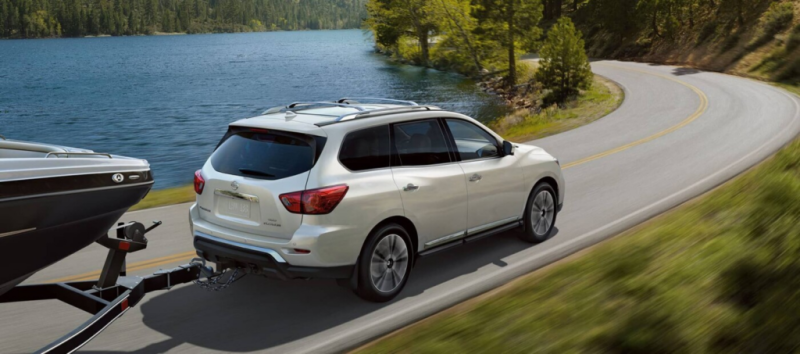 Source: downtownnissan
Source: downtownnissan
The Pathfinder has 16.6 cu ft (470 L) of cargo room below the third row. The amount of space grows to 45 cubic feet (1,274 L) with the third row of seats folded down. Fold down the second row of seats to increase cargo space to a total of 80.5 cubic feet (2,280 L).
With an official rating of 6,000 lbs (2,722 kg) when properly equipped, the Pathfinder has one of the highest towing ratings of any car in this class. Models with front-wheel drive can still lift 3,500 lbs (1,588 kg), making them respectable towers.
Value
The 2022 Nissan Pathfinder is the more affordable vehicle at the base and loaded levels, though both of these are on the more expensive end of the scale. Shoppers on tighter budgets may want to check out the Chevrolet Traverse or Subaru Ascent, both of which are value leaders in this segment. The Pathfinder starts at $46,198 for the basic S model. The fully loaded Platinum model tested starts at $56,858.
The Highlander starts at $46,640 for the entry-level LE model and scales up to $57,380 for the Limited model with the Platinum package. All prices include their respective freight charges.
Nissan Pathfinder: 7.5/10; Toyota Highlander: 7/10
Main Differences Between Toyota Highlander and Hyundai Palisade
The three crossover SUVs, Toyota Highlander and Hyundai Palisade, are very similar to each other. However, it is very different from each other.
Yet, people tend to see them as similar. Both have a similar appearance to some specifications. Moreover, it has a set of differences.
- The cost of a Toyota Highlander is 35,205 USD, and the cost of a Hyundai Palisade is 33,150 USD.
- Toyota Highlander is plenty of space for 8 passengers, with the third row strictly for kids. In contrast, Hyundai Palisade has all three adult rows and seats for up to 8 passengers.
- Toyota Highlander has a 3.5l V6 engine or a 4-cylinder hybrid. Meanwhile, Hyundai Palisade has a 3.8l V6 engine.
- Toyota Highlander has 3 years warranty of 36,000 miles. In contrast, Hyundai Palisade has 5 years warranty of 60,000 miles.
- Toyota Highlander has 295 horsepower with a torque of 4700rpm. While Hyundai Palisade has 291 horsepower with 2500rpm.
References
- https://org2-www.hyundai.com/content/hyundai/ww/data/news/data/2018/0000016073/attach/2020%20Hyundai%20Palisade%20Overview_Global.pdf
- http://aodr.org/_common/do.php?a=full&b=12&bidx=2282&aidx=26753
Home – Travel – Toyota Highlander vs Hyundai Palisade: Difference and Comparison
Last Updated : 13 July, 2023
One request?
I’ve put so much effort writing this blog post to provide value to you. It’ll be very helpful for me, if you consider sharing it on social media or with your friends/family. SHARING IS ️
Interior and cargo volume
On paper, the 2022 Nissan Pathfinder vs. Toyota Highlander are closely matched. Oddly, while the all-new Pathfinder is larger on paper, the Highlander can hold more cargo behind the first and second row of seats. Maximum cargo space (with both rows folded) has the Highlander at 84.3 cubic feet, and the Pathfinder at 80.5 cubic feet. Behind the second row, the Highlander has over three cubic feet more space, but the Pathfinder has about a half-cubic foot of space behind the third row.
Actually, the seating is where the Nissan truly shines. It has the most usable space, the most comfortable seats, and the easiest to use seating as well. Being that these are family rides that are dependent on easy to use, comfortable interior spaces, that’s where Nissan makes up for other limitations.
This is a close one folks.
In the video below, you will see what makes these two vehicles different, and which vehicle might be right for you:
Conclusion
Nissan and Toyota made crucial steps in the right direction this year. The Highlander is the better vehicle, offering the dependability that you expect from the brand, exceptional fuel economy, and best-in-class safety. It’s a more expensive option at its starting price, but the confidence the Highlander affords is hard to match in any other model.
Looking at the 2022 Pathfinder, you can see that Nissan is making smarter moves to cater to more customers. The exterior styling is a significant step up, and some of the features seem so practical that it’s surprising they’re exclusive to Nissan. There are certainly some issues to work out, and the 2023 Pathfinder may bring more flawless execution to this year’s great ideas. That said, with the features you get for the price, it’s almost like Nissan is realistic about its position in the hearts and minds of its customers and wants to give more for the money.
They’re two distinct vehicles, but the Pathfinder and Highlander vie for the same crowd. Neither are the most exciting to drive, but if you contend with a car full of kids in your daily driver and want to keep everyone comfy and entertained, make sure to give these two stellar options a test drive before deciding.
See also:
- Toyota Highlander vs. Kia Telluride: Which One’s Best for me?
- Toyota Highlander vs. Honda Pilot: Which Should You Choose
Featured Image Credit: Left: Nissan Pathfinder (Image Credit: EurovisionNim, Wikimedia Commons CC BY-SA 4.0) | Rght: Toyota Highlander (Image Credit: Kevauto, Wikimedia Commons, CC BY-SA 4.0)
Trim Levels
The 2023 Nissan Pathfinder is available in four trim levels: S, SV, SL, and Platinum. Each trim offers a unique blend of features and options, ensuring that buyers can find a configuration that meets their needs and budget. Notable features on higher trim levels include leather seating, a 13-speaker Bose audio system, and wireless smartphone charging.
The 2023 Toyota Highlander is offered in six trim levels: L, LE, XLE, XSE, Limited, and Platinum. As with the Pathfinder, each trim level provides various features and options to suit different preferences and budgets. Upgrades on higher trim levels include a panoramic moonroof, a JBL premium audio system, and a head-up display.
Key Differences
While the 2023 Nissan Pathfinder and Toyota Highlander share many similarities, there are key differences that set them apart. These differences can help prospective buyers decide which midsize SUV better suits their needs and preferences.
Exterior Design:
The Nissan Pathfinder showcases a more rugged and aggressive design, with a bold front grille and sculpted lines. This design is well-suited for those who appreciate a more robust, off-road look. Conversely, the Toyota Highlander sports a sleek and refined exterior, with a sophisticated front grille and fluid body lines that appeal to buyers who prefer an elegant and contemporary aesthetic.
Interior Design:
While both vehicles offer comfortable and upscale interiors, the Highlander has a slightly more premium design with a larger available 12.3-inch touchscreen infotainment system, compared to the Pathfinder’s available 9-inch system. Additionally, the Highlander’s dashboard design is cleaner and more modern.
Seating:
Both vehicles accommodate up to eight passengers, but the Highlander offers more legroom for second- and third-row passengers, ensuring extra comfort during long journeys.
Storage:
Although both SUVs provide ample cargo space, the Highlander has a slight edge with more storage capacity when the third row is folded down (48.4 cubic feet) and when both the second and third rows are folded (84.3 cubic feet), compared to the Pathfinder’s respective 45 cubic feet and 80.5 cubic feet.
Performance:
In terms of engine output, the Toyota Highlander boasts slightly more power with its 3.5-liter V6 engine producing 295 horsepower and 263 lb-ft of torque, as opposed to the Pathfinder’s 3.5-liter V6 engine generating 284 horsepower and 259 lb-ft of torque. Additionally, the Highlander’s 8-speed automatic transmission contributes to smoother acceleration compared to the Pathfinder’s 9-speed transmission.
Towing Capacity:
The Nissan Pathfinder has a clear advantage in towing capacity, capable of pulling up to 6,000 pounds when properly equipped, while the Toyota Highlander can tow up to 5,000 pounds.
Fuel Efficiency:
The Toyota Highlander offers better fuel efficiency in both front-wheel-drive and all-wheel-drive configurations, with the added option of a hybrid model for eco-conscious buyers. The hybrid model boasts an impressive 36 mpg combined fuel efficiency rating, which is significantly higher than the Pathfinder’s non-hybrid fuel efficiency numbers.
Trim Levels:
While the Nissan Pathfinder offers four trim levels (S, SV, SL, and Platinum), the Toyota Highlander has six trim levels (L, LE, XLE, XSE, Limited, and Platinum), providing more options for customization and feature preferences.
Pricing:
The Nissan Pathfinder is slightly more affordable, with the base S trim starting at around $34,500 and the Platinum trim at approximately $49,000. Meanwhile, the Toyota Highlander’s base L trim starts at around $36,000 and the Platinum trim begins at approximately $52,000.
Comparing Price: Toyota Highlander vs. Nissan Pathfinder
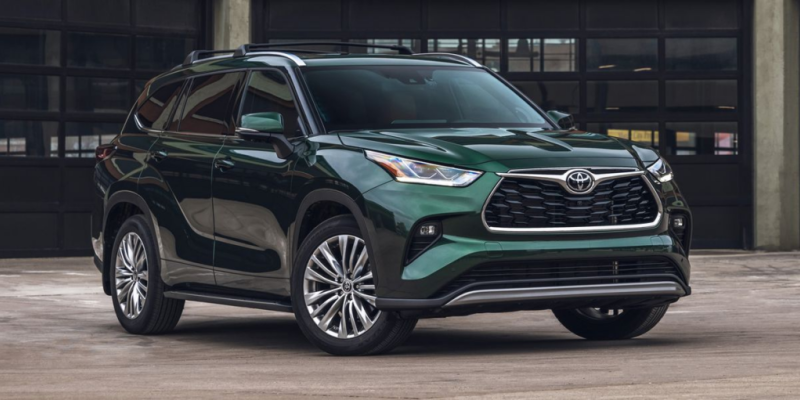 Source: caranddriver
Source: caranddriver
Toyota Highlander, after destination fees, the base price for the front-wheel-drive Toyota Highlander L is $37,070. The price of the all-wheel drive L is $38,670. For front-wheel drive, the LE starts at $39,270; for a hybrid drivetrain costs $40,770. The price of an LE gasoline vehicle with all-wheel drive increased to $41,295, while an LE hybrid with all-wheel drive costs $42,370.
Front-wheel drive gasoline XLE models start at $42,270, while all-wheel drive models cost $43,870. The MSRP of the XLE hybrid with front-wheel drive is $43,770; adding all-wheel drive brings the cost to $45,370. The starting price for the front-wheel-drive version of the XSE, which only has a gasoline engine, is $43,865, while the all-wheel-drive version is $45,815.
The Hylander Bronze Edition, which debuted this year, is limited to the hybrid drivetrain and all-wheel drive. It costs $45,795 on the list. The Limited, which comes in a choice of four powertrains, is the second-highest trim. All-gas Limiteds with front-wheel drive cost $46,225, while all-wheel drive vehicles cost $48,175. Front-wheel drive Hybrid Limiteds cost $48,150, and all-wheel drive models cost $49,675.
Last but not least, the Highlander Platinum, the top model, starts at $49,225 for front-wheel drive and $51,175 for all-wheel drive. The price rises to $51,150 for front-wheel drive and $52,675 for all-wheel drive when the hybrid drivetrain is included.
Related: Toyota Highlander Years To Avoid | 20 Best & Worst Years
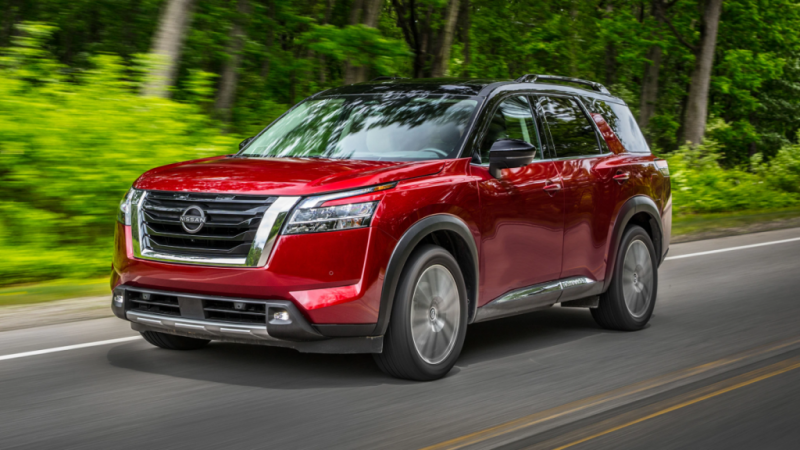 Source: metronissanredlands
Source: metronissanredlands
The Pathfinder’s entry-level model, the S 2WD, costs $35,856 (all prices include a $1,225 destination fee). The SV 2WD, which is the next trim level up, costs $38,685. It may be purchased for an extra $2,170 by purchasing the Premium Package.
The Pathfinder SL 2WD costs $41,765 and comes with a $2,900 Premium Package as an option. The Platinum 2WD Pathfinder, which starts at a cost of $48,365, is the top-of-the-line model. All-wheel drive may be fitted to any Pathfinder grade for $1,900.
Conclusion
Nissan and Toyota manufactured critical measures in the proper route this 12 months. The Highlander is the greater automobile, providing the dependability that you assume from the brand name, excellent gasoline economy, and very best-in-class safety. It’s a more costly alternative at its beginning price tag, but the self confidence the Highlander affords is difficult to match in any other product.
Searching at the 2022 Pathfinder, you can see that Nissan is generating smarter moves to cater to a lot more clients. The exterior styling is a significant phase up, and some of the attributes appear so functional that it’s astonishing they’re exceptional to Nissan. There are undoubtedly some troubles to function out, and the 2023 Pathfinder may provide a lot more flawless execution to this year’s wonderful suggestions. That said, with the characteristics you get for the cost, it is virtually like Nissan is sensible about its position in the hearts and minds of its consumers and needs to give a lot more for the money.
They are two distinctive cars, but the Pathfinder and Highlander vie for the very same group. Neither are the most fascinating to drive, but if you contend with a car complete of children in your everyday driver and want to keep every person comfy and entertained, make sure to give these two stellar choices a check generate just before deciding.
Highlighted Picture Credit: Left: Nissan Pathfinder (Picture Credit rating: EurovisionNim, Wikimedia Commons CC BY-SA 4.) | Rght: Toyota Highlander (Impression Credit: Kevauto, Wikimedia Commons, CC BY-SA 4.)
Contents
Toyota Highlander Overview
Toyota created a motor vehicle for everybody in this year’s expansive Highlander lineup. There are a lot more tiers to this lineup than in the Pathfinder’s, and you also have several hybrids between the bunch. As with Nissan, Toyota crammed standard functions into entry-level models, carrying out its very best to preserve competitive value with every single phase in the collection.
And like the Pathfinder, fuel versions are FWD with an AWD update, this time for $one,600–$1,950, based on the model. It’s a properly-made journey featuring Toyota’s hallmarks of dependability and gasoline economy, and it will get unexpectedly luxurious after you move into the leading-tier versions.
Comfort and Entertainment
The very first two rows of the Highlander are adult-pleasant in space and comfort and ease, and every single product is generously appointed. The XLE replaces material interiors with SofTex vegan leather-based and updates seating to a ten-way driver facet and eight-way passenger side energy-adjustable seating, a notable advantage above the Pathfinder’s 4-way passenger aspect adjustability. Shifting to the Constrained and Platinum models upgrades the comfort and ease even far more with leather seating.
Captain’s chairs are an obtainable selection on the XLE model and over, and you can up grade to heated with the Platinum. 3rd-row legroom is restricted, so it’s only appropriate for young children.
The common infotainment deal is entire of features. Every Highlander involves an eight-inch touchscreen display, Apple CarPlay, Android Car, Amazon Alexa, a six-speaker seem method, and a wi-fi hotspot. Shifting to the XLE, you acquire a wireless charging station and optional Driver Straightforward Communicate, which initiatives the driver’s voice throughout the cabin. The Constrained and Platinum bump the display screen measurement to an massive 12.three inches, and audio improves to an 11-speaker JBL method.
Safety
Every Highlander comes outfitted with the Toyota Safety Sense 2.5 deal and a complimentary one-yr subscription to Basic safety Hook up, a suite of companies to assist with roadside guidance, stolen automobiles, and collision notifications.
The Basic safety Sense 2.5 services setup is equivalent to Nissan’s choices, but you also get street sign guidance and dynamic cruise management as element of the normal package. Blind-location monitoring doesn’t arrive with the L collection, but it is available on every subsequent upgrade.
Performance and Fuel Economy
The Highlander edges the Pathfinder for fuel effectiveness in the gas variations, but the hybrid blows it out of the drinking water. With 35 mpg blended, the Highlander hybrid is one particular of the most inexpensive a few-row SUVs available.
Like the Pathfinder, the driving response is sufficient but uninspiring. The eight-velocity computerized transmission replaces the CVT from previous year’s design, offering you far more reliability with out supplying up way too significantly in sleek acceleration and deceleration. The hybrid sticks with the CVT, and you get rid of some acceleration. The fuel product compares to the Pathfinder, but the hybrid goes from 0–60 in about 7 seconds.
Pros
- Good fuel economy
- Excellent standard safety features
- Upgraded interior seating from prior year models
- Expansive infotainment options
Cons
- Outdated touchscreen
- Infotainment control array feels awkward
- Poor third-row seating space
Vacation Potential
These SUVs can certainly be used for day-to-day transportation and errand running; when properly equipped, they can also help take your next vacation to the next level. Both are available with all-wheel drive, giving them extra traction and greater ability to leave paved roads behind.
When paired with AWD, the Highlander has a Multi-Terrain Select system that lets you switch between four different modes (Mud/Sand, Rock/Dirt, Snow, and Normal) so that you can get optimal performance in various situations. The Pathfinder’s Intelligent 4×4 system features a system that offers seven Drive and Terrain modes (Standard, Sand, Mud/Rut, Snow, Eco, Sport, and Tow), giving you a greater variety of options. And models of the Pathfinder that use FWD still come with a five-mode version of the system, which is good news for those who choose not to spring for AWD.
If you want to bring a boat or trailer along for your outdoor getaway, you should closely examine their towing capabilities. Both SUVs offer features designed especially for towing, like trailer sway control and camera views that can help you line up your hitch with your trailer, park safely, and compensate for your expanded blind zones. But when it comes to stats, the Pathfinder is the clear superior, with a maximum capacity of 6,000 lbs compared to the Highlander’s 5,000-lb capacity.
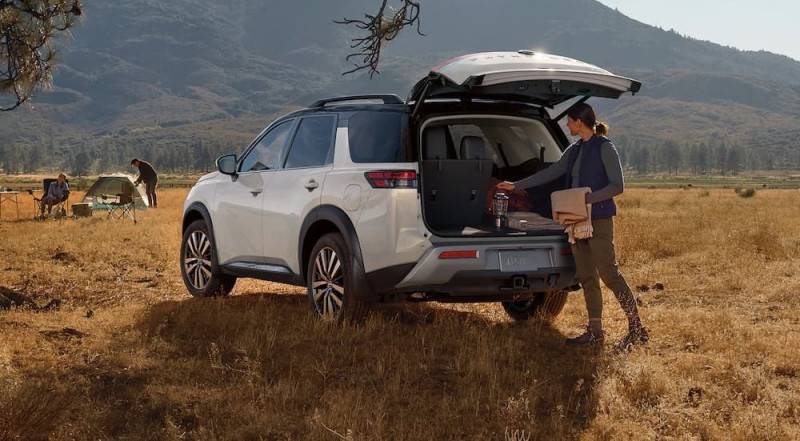
Under The Hood
Large utility vehicles like these are weighty, with the heftiest Highlander tipping the scales at around 4,600 pounds curb weight. Pathfinders weigh about the same, fully-kitted out, although base models tend to be heavier than the entry-level Highlanders. Powerful engines are thus a hallmark of the class to get these beasts moving.
Engine And Performance
Gone are the days when only gas engines were used in the segment. The Highlander rises to the eco-conscious challenge by offering two powertrain options, including a hybrid setup that makes a combined 243 horsepower. The standard 3.5-liter V6 gas engine is good for 295 hp and 263 lb.-ft of torque.
With either of these powertrains, it will take the Highlander up to 7.3 seconds to get to 60 mpg, and towing capacity ranges from 3,500 lbs. with the hybrid to 5,000 with the gas motor.
Nissan has a 3.5-liter V6 under the Pathfinder’s hood, too, but it makes 284 hp and 259 lb.-ft in this guise. Despite making a little less in the Nissan, it gets to 60 mph in seven seconds and can tow more – up to 6,000 lbs.
Drive Experience
Evenly matched in most ways, both these SUVs offer a large family carrier’s drive and handling experience. There’s somebody lean through turns, especially at speed, but both are pleasant and comfortable to pilot. As is expected of a large utility vehicle like this, you have to be attentive in tight spaces and maneuver cautiously around parking lots.
Still, the host of standard and available driver assists make this less of a chore.
At The Pumps
Frugality isn’t expected in the segment, but with a hybrid option on the menu, the Highlander manages satisfactory gas mileage figures. The EPA rates the hybrid Highlander at 36/35/36 mpg on city/highway/combined cycles, while the gasoline engine variant achieves 21/29/24 mpg in front-wheel-drive – this drops by a point or two when you switch to all-wheel drive.
The Pathfinder offers slightly less impressive figures, with 21/27/23 mpg allocated to the most fuel-efficient 4WD-equipped model. Opting for the top-spec Platinum trim drops these figures to 20/25/22 mpg. In the battle at the pumps, it’s the Highlander that comes out tops.
Power and performance
The 2022 Toyota Highlander has a few powertrains to choose from, including a hybrid, but we got our hands on a V6 all-wheel drive (AWD) model that directly competes against the Nissan. That 3.5-liter V6 makes 295 horsepower and 263 pound-feet of torque. Paired with an eight-speed automatic transmission, it returns an EPA rating of 23 mpg combined. Its real trick is the new “torque vectoring” AWD system which actually works. It sends up to 50% of the torque to the rear wheels, and splits the power to whichever rear wheel needs power. This helps on and off road, but it truly is a boon for better on-road handling.
For the most part, the “Dynamic Torque Vectoring AWD” system is seamless, but you also have a Multi-Terrain Select terrain mode. This system changes the throttle mapping and traction control system for various types of terrain. It’s not for off-roading, and there is no tow mode.
How does the Pathfinder compare?
Nissan opted to keep their old 3.5-liter V6 in the 2022 Nissan Pathfinder. While making 284 hp and 259 lb-ft isn’t outstanding (neither is its 22 mpg combined) it is still plenty quick. That has to do with the gearing of the all-new nine-speed automatic transmission. It’s not only world’s better than the former continuously variable transmission (CVT), it’s smoother than many rivals. The Intelligent 4WD system has a seven-position Drive and Terrain Mode Selector. It’s actually an AWD system, but it’s pretty good. Not only can you keep power running 50/50 front and rear (at slow speeds), but there is an actual tow mode as well.
The Nissan Pathfinder tows up to 6,000 lbs, the Highlander is rated at a maximum of 5,000 lbs. While the Pathfinder is marketed to be more rugged than some in this class, it’s off-road measurements fall short of the Toyota Highlander. Seriously, neither should be doing any boulder bashing.
Both vehicles are very close in weight, yet they handle their mass differently. The Nissan, with its longer wheelbase, seems to be a slightly more comfortable ride. The Toyota, on the other hand, feels far more athletic – at least in the Platinum which gives you wide/stiff rubber and that trick AWD system. Honestly, the overall feel of the cars boils down to their interiors.
The two cars bring well-equipped interiors in their top-end trims (Top: Nissan Pathfinder; Bottom: Toyota Highlander).
Comparing Style: Toyota Highlander vs. Nissan Pathfinder
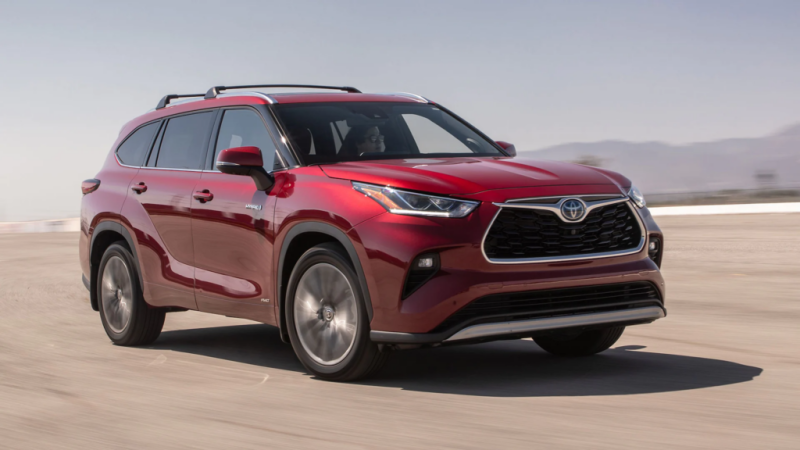 Source: motortrend
Source: motortrend
Toyota Highlander’s design is being phased out since, as previously noted, the Highlander is overdue for an update. It is clearly identifiable as a Toyota SUV thanks to its corporate front fascia and steeply pointed LED headlamps. The B- and C-pillars on the Highlander are painted in black to provide the impression of a floating roof.
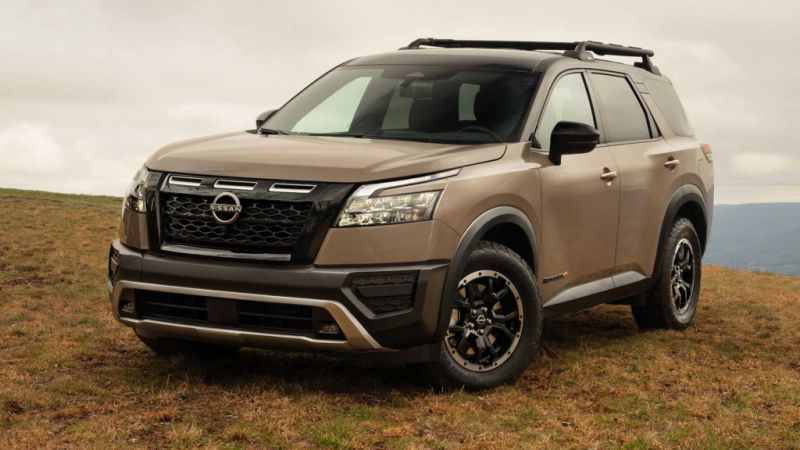 Source: motortrend
Source: motortrend
For this generation, the newest Pathfinder has adopted a more rugged appearance, making it appear less like a crossover and more like a regular SUV. It is squared off, but not as much as Subaru and Jeep’s boxier competitors. Nissan’s distinctive design language is featured on the front end, while the rear features a classy appearance that might be mistaken for anything from a higher price range.
Nissan Pathfinder Overview
The Pathfinder models aren’t a challenge to figure out this year. There are only four in the lineup, each available in FWD or AWD for an extra $1,900, and the specs are similar throughout, with expected add-ons in higher-tier models.
Nissan took a focused approach to the simplicity of the lineup, and it works out to give the Pathfinder more credibility as a family wagon. We don’t get a divergent model this year. There is no lackluster, mid-tier, “off-road-for-show” vehicle that underwhelms against more rugged contenders in challenging terrain. Instead, you have a practical family vehicle for all things families would want to do. It keeps you comfortable and your kids entertained on the way to school, and it has the power and grit needed to take the boat to the lake for the weekend.
Models
- S
- SV
- SL
- Platinum
Comfort and Entertainment
The S series doesn’t hold back in comfort compared to other base models among the competition, but it takes one or two upgrades to get any noteworthy features. Upgrading to the SV, you get the following:
Features
- 10-way power driver’s seat adjustment
- Heated front seats
- Remote start with Intelligent Climate Control
- Optional second-row captain’s chairs
- Leather-wrapped steering wheel
Moving to the SL, you upgrade to leather seating, power passenger seat adjustment, heated steering wheel, optional panoramic moonroof, and optional heated second-row captain’s chairs. When you jump up to the Platinum, second-row captain’s chairs are standard, as are the second-row center console, driver’s seat memory, and complete climate control in the front seats.
Standard infotainment packages in all Pathfinder models include an 8-inch touch display with the latest NissanConnect operating software, Apple CarPlay, Android Auto, voice recognition, and a 6-speaker sound system. Upgrading to the SV gives you a wi-fi hotspot, but the SL and Platinum are where the entertainment packages take off. In the SL, you gain an extra USB, wireless CarPlay, Door-to-Door navigation, and a 3-month trial to SiriusXM Travel Link.
A wireless phone charging pad and 13-speaker Bose audio system are available options on the SL and standard on the Platinum version. You’ll also gain a heads-up display and a customizable all-digital dashboard in this top-end model.
Safety
The standard driver’s assist features on the Pathfinder are impressive and more comprehensive than many of its rivals. Even the cheapest base model comes with the following components as part of the Nissan Safety Shield 360 package:
Safety features
- Forward collision detection
- Automatic braking with pedestrian detection
- Lane departure and lane-keep assist
- Blind-spot monitor and rear cross-traffic alert
- Automatic reverse braking
- Driver alertness monitor
- High beam assist
Upgrading to the SL adds automatic intervention for lane departure and blind-spot monitoring. You also gain Nissan’s ProPilot Assist, an autonomous driving feature that assists with braking, accelerating, and lane centering.
Performance and Fuel Economy
The Pathfinder’s fuel economy of 23 mpg combined is average at best. If good gas mileage is your main priority, you’re better off with a lower-priced but more fuel-efficient Volkswagen Tiguan or Mitsubishi Outlander. Or, if you don’t mind spending some extra cash, you could opt for one of a handful of hybrid options like the Kia Sorento or, yes, the Toyota Highlander, both of which get over 35 mpg combined.
A 9-speed automatic transmission replaces the CVT of prior Pathfinder versions, so you get better dependability without sacrificing much in smooth acceleration. Getting up to 60 mph takes just under 7 seconds, beating many of its competitors and contradicting its relatively low power and torque. Every AWD model also includes a 7-mode dial selector for various types of terrain and an Intelligent 4×4 system to automatically adjust torque and maintain traction and direction in adverse conditions.
Pros
- Excellent standard safety and driver-assist package
- Lots of storage cubbies and cargo room
- Sharp, updated exterior style
- Superior towing capacity
- Quiet and pleasant ride
Cons
- Limited third-row legroom
- Struggles in off-road situations
Comparison Table
| Parameters of Comparison | Toyota Highlander | Hyundai Palisade |
|---|---|---|
| Cost | The cost of Toyota Highlander is 35,205 USD. | The cost of Hyundai Palisade is 33,150USD. |
| Capacity | Toyota Highlander is plenty of space for 8 passengers with the third row strictly for kids. | Hyundai Palisade has all three rows for adults and has seats for up to 8 passengers. |
| Engine | Toyota Highlander has a 3.5l V6 engine or a 4-cylinder hybrid. | Hyundai Palisade has a 3.8l V6 engine |
| Warranty | Toyota Highlander has 3 years warranty of 36,000miles. | Hyundai Palisade has 5 years warranty of 60,000 miles. |
| Horsepower and Torque | Toyota Highlander has 295 horsepower with a torque of 4700rpm. | Hyundai Palisade has 291 horsepower with 2500rpm. |
